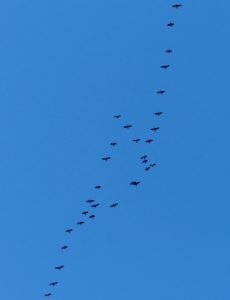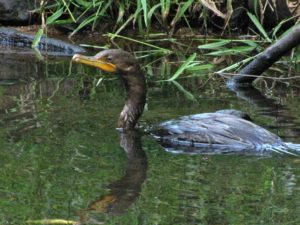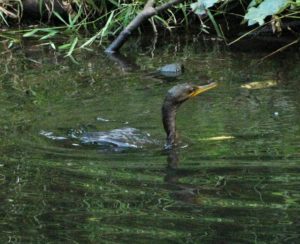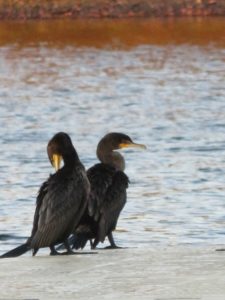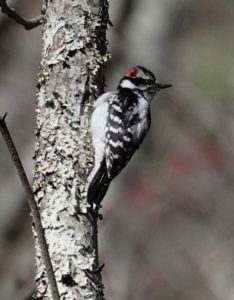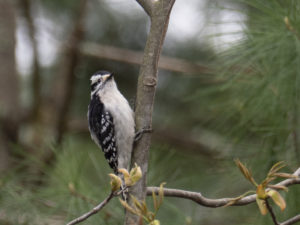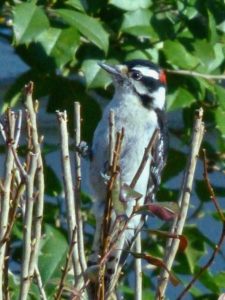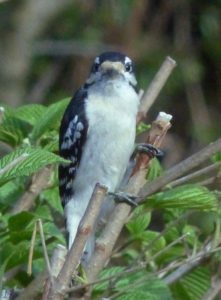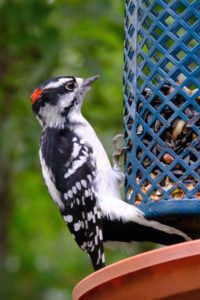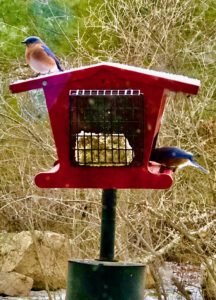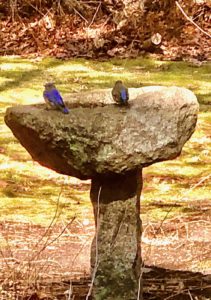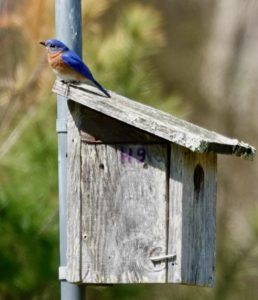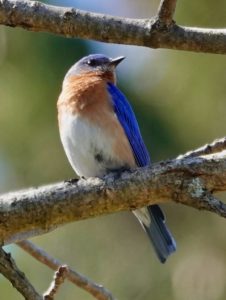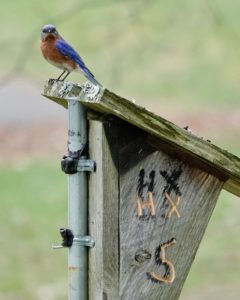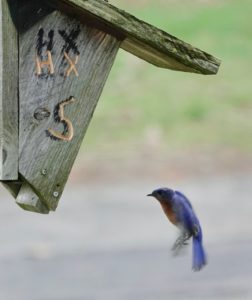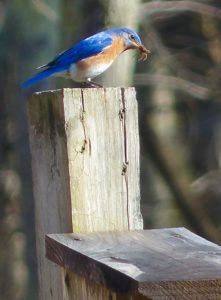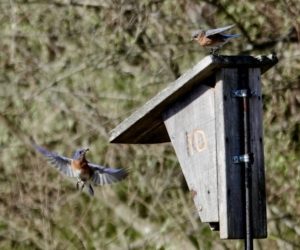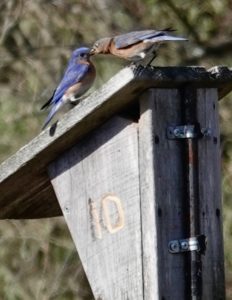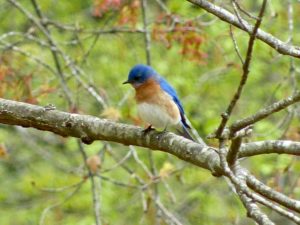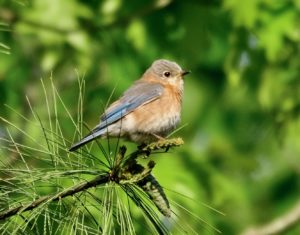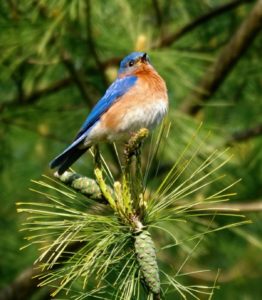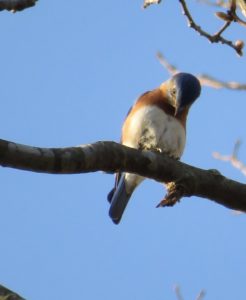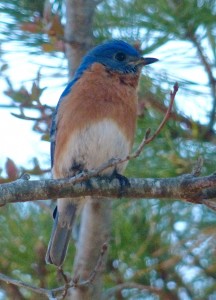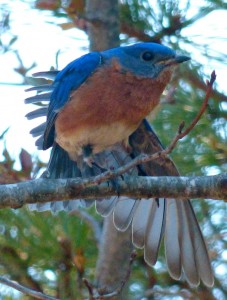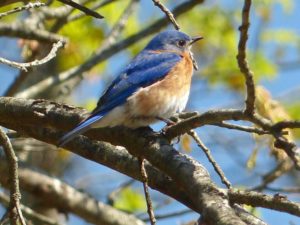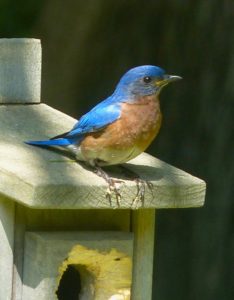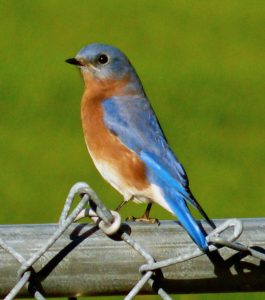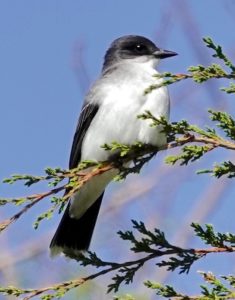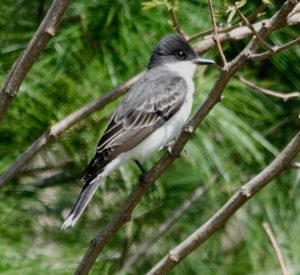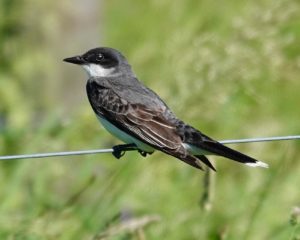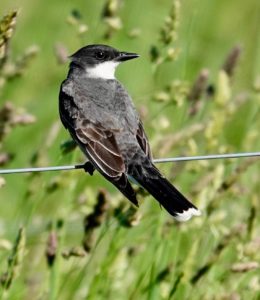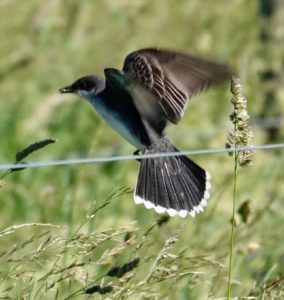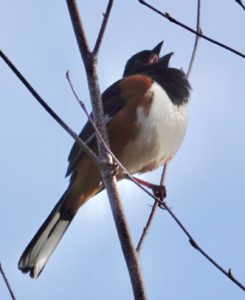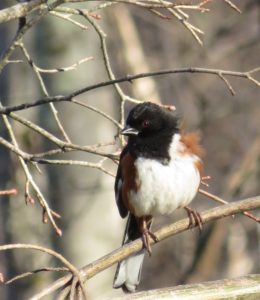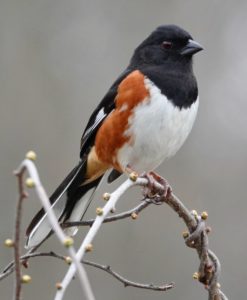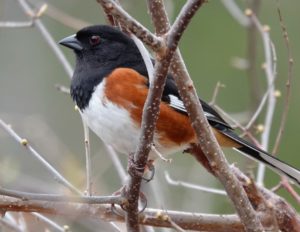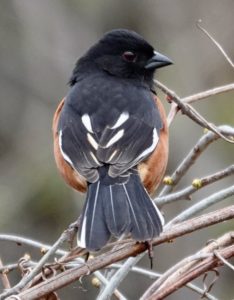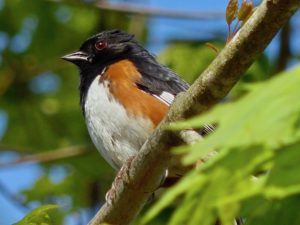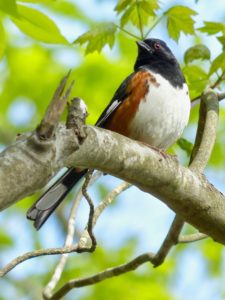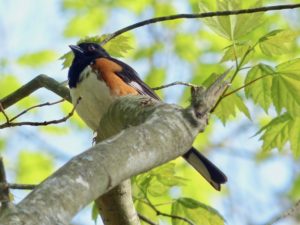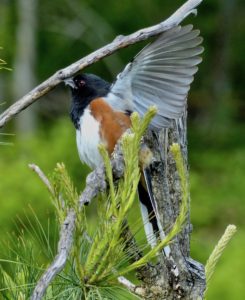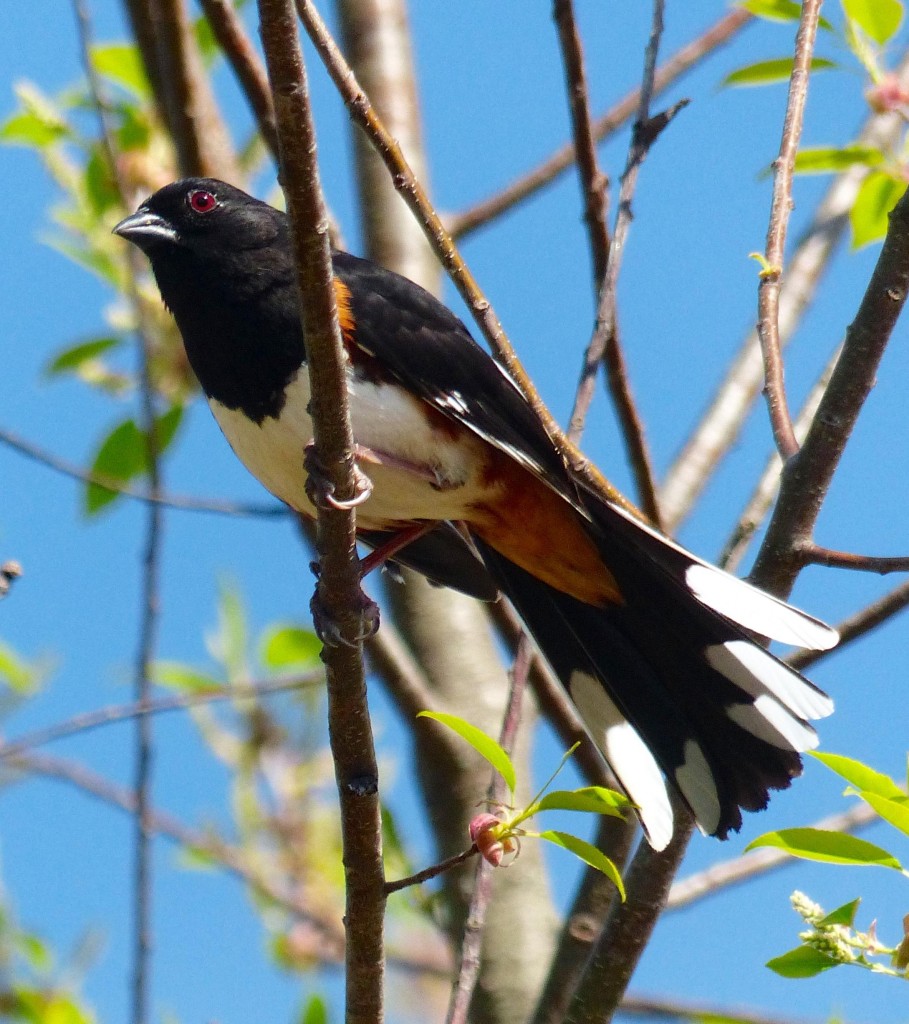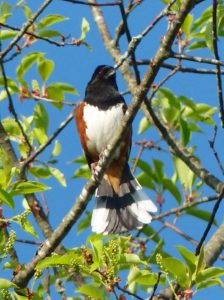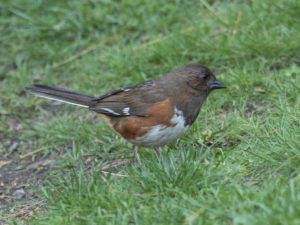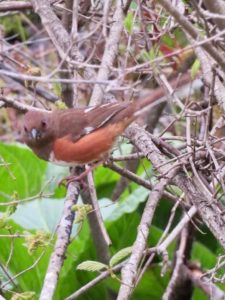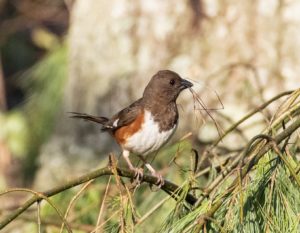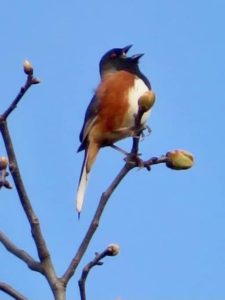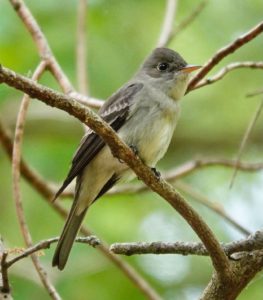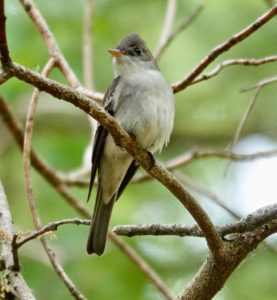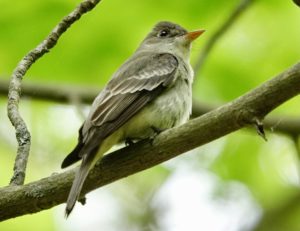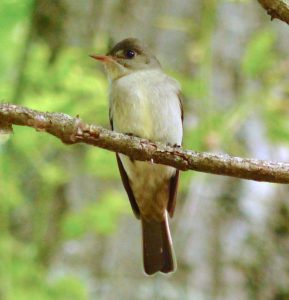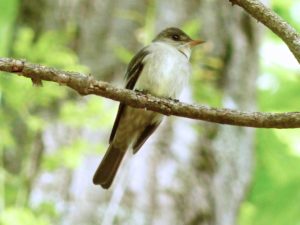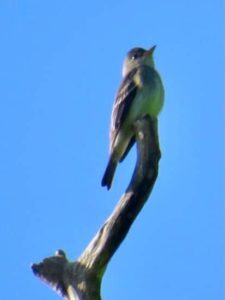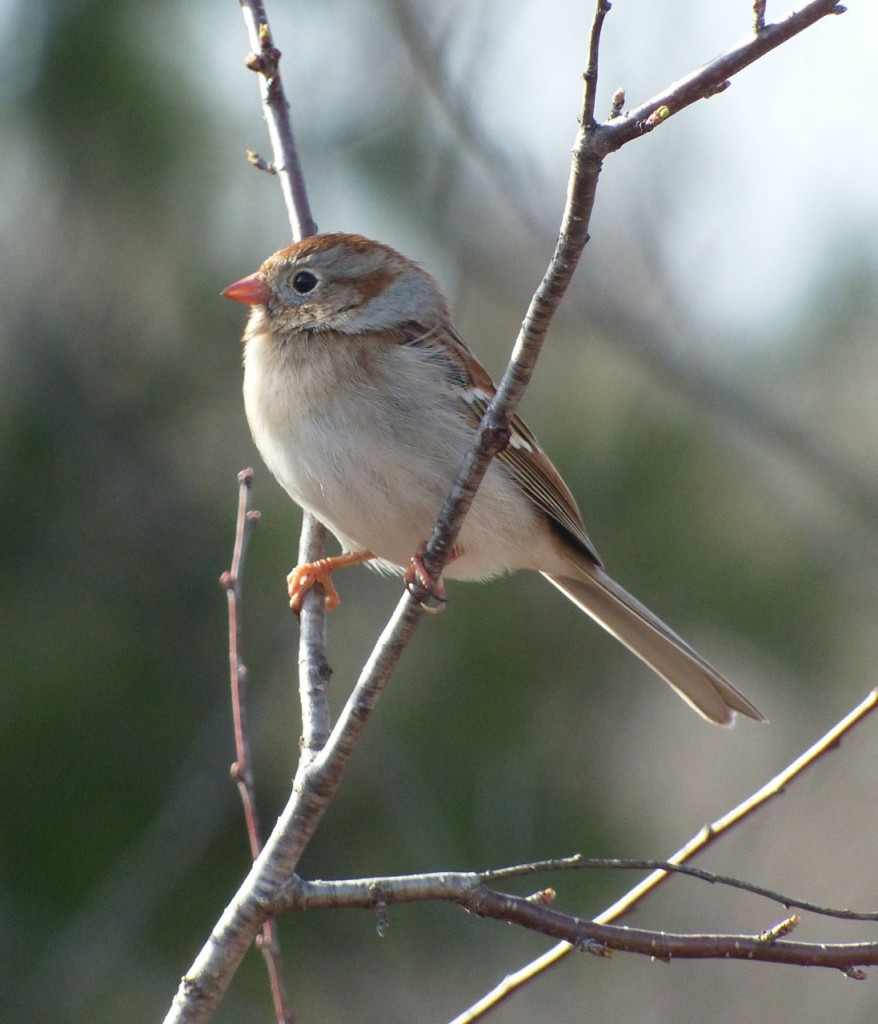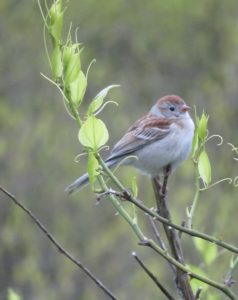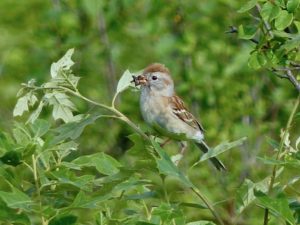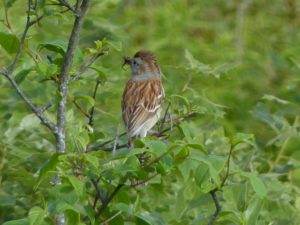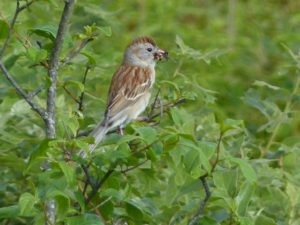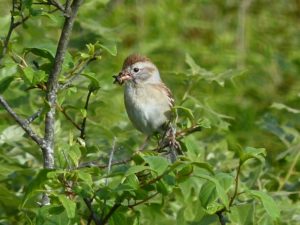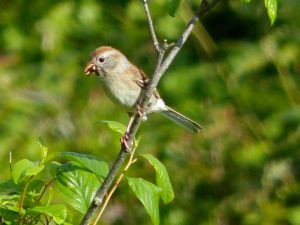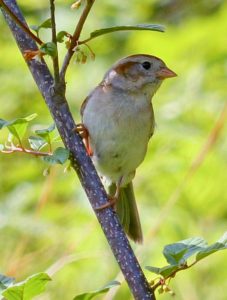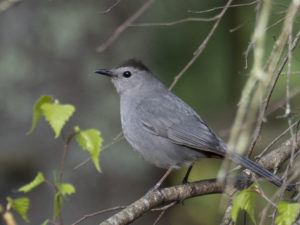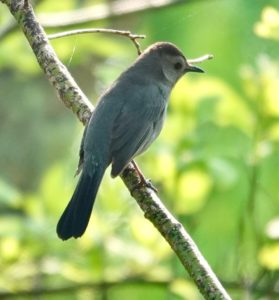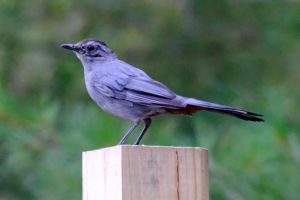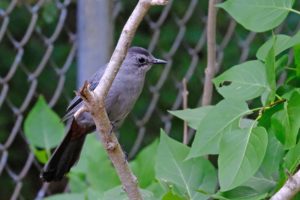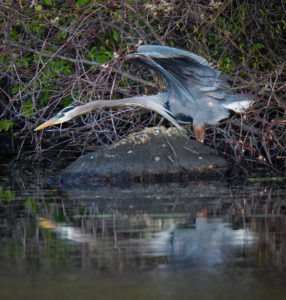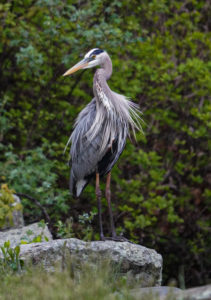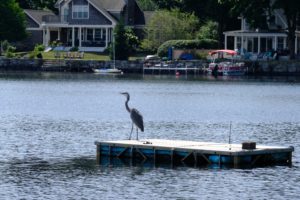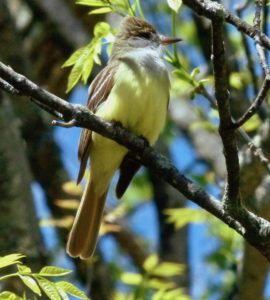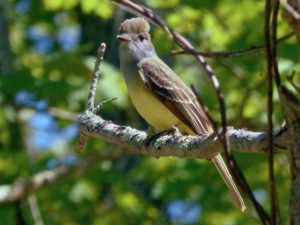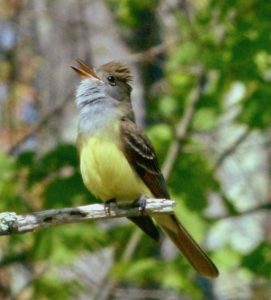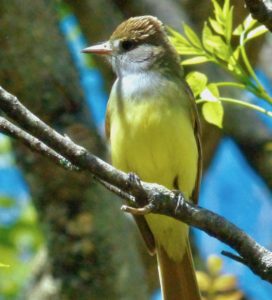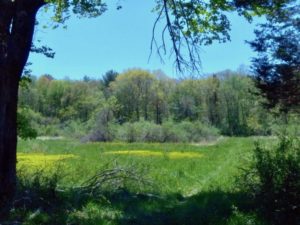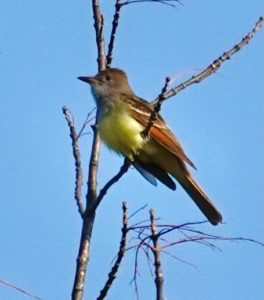Sightings – Birds
Observer: Paul Lauenstein
Observation Date: 3/8/14
Observation Time: 10:55 a.m.
Observation Location: Moose Hill Audubon Wildlife Sanctuary
Common Name: Dark-eyed Junco
Scientific Name: Junco hyemalis
Comments: Juncos are winter birds in Sharon.
More Information: Cornell Lab of Ornithology “All About Birds”
Previous, Subsequent, or Similar Sightings:
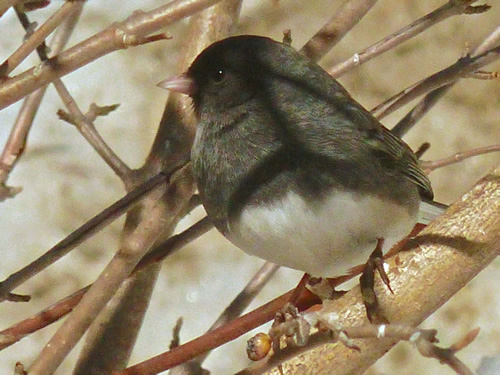
Observer: Paul Lauenstein
Observation Date: 4/18/11
Observation Time: 11:25 a.m.
Observation Location: Gavins Pond
Common Name: Dark-eyed Junco
Scientific Name: Junco hyemalis
Comments: Juncos are a type of sparrow commonly seen around Sharon in winter. This individual will soon be heading north for summer.
More Information: Cornell Lab of Ornithology “All About Birds”
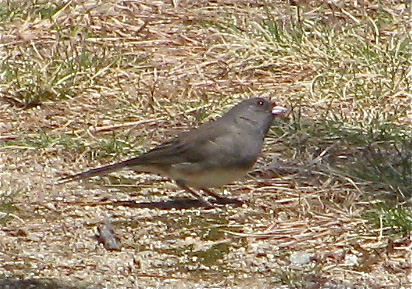
Observer: Paul Lauenstein
Observation Date: 5/7/19
Observation Time: 7:42 a.m.
Observation Location: Moose Hill Audubon Wildlife Sanctuary
Common Name: Double-crested Cormorant
Scientific Name: Phalacrocorax auritus
Comments: When migrating, cormorants fly loosely in lines, as opposed to the familiar “vees” that geese use.
More Information: All About Birds
Observer: Paul Lauenstein
Observation Date: 9/1/12
Observation Time: 4:40 p.m.
Observation Location: Gavins Pond outflow pool
Common Name: Double-crested Cormorant
Scientific Name: Phalacrocorax auritus
Comments: Most commonly seen cormorant in the East and usually the only one seen inland. Feeds by diving and swimming underwater, eating mostly fish. After feeding, often stands with wings outstretched to dry.
More Information: All About Birds
Observer: Deb Radovsky
Observation Date: 10/27/17
Observation Time: early morning
Observation Location: Lake Massapoag
Common Name: Double-crested Cormorants
Scientific Name: Phalacrocorax auritus
Comments: The double-crest of the Double-crested Cormorant is only visible on adults during breeding season. The crests are white in cormorants from Alaska, and black in other regions.
More Information: All About Birds
Observer: Rick Dumont
Observation Date: 1/26/08
Observation Time: 4:15 p.m.
Observation Location: Front yard
Common Name: Downy Woodpecker
Scientific Name: Picoides pubescens
Comments: First the male showed up, then along came the female. The male has a moustache and red stripe while the female is clean-shaven and stripeless.
More Information: All-Birds.com
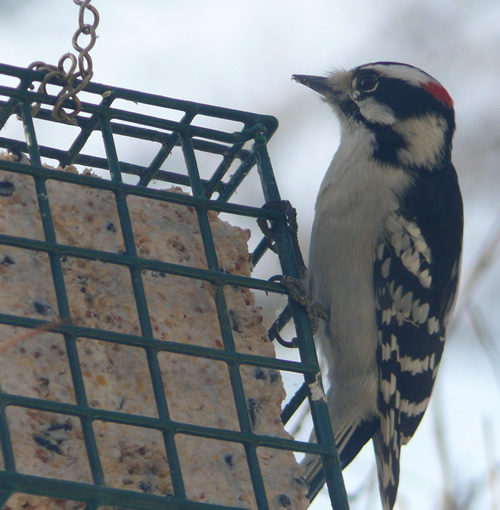
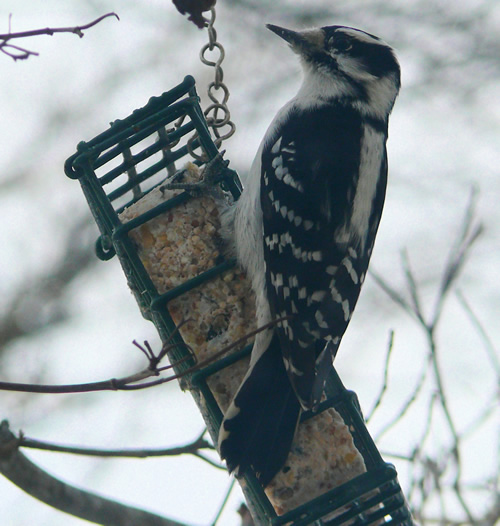
Observer: Josh Simons
Observation Date: 2/16/14
Observation Time: 9:00 a.m.
Observation Location: Moose Hill area
Common Name: Downy Woodpecker
Scientific Name: Dendrocopos pubescens
Comments: Dendrocopos means “tree dagger” and “pubescens” refers to its downy hairs of puberty compared to those of the Hairy woodpecker, D. villosus.[The Dictionary of American Bird Names by Ernest A. Choate]
More Information: All About Birds
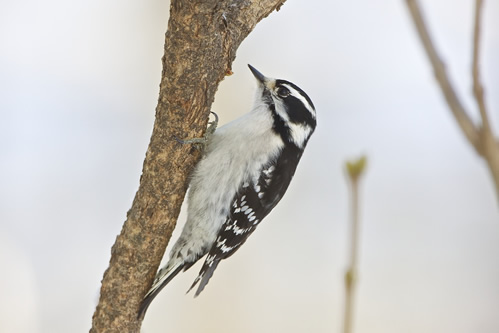
Observer: Paul Lauenstein
Observation Date: 4/15/20
Observation Time: 2:00 p.m.
Observation Location: Conservation land near Sandy Ridge Circle
Common Name: Downy Woodpecker
Scientific Name: Dendrocopos pubescens
Comments: Dendrocopos means “tree dagger” and “pubescens” refers to its downy hairs of puberty compared to those of the Hairy woodpecker, D. villosus. [The Dictionary of American Bird Names by Ernest A. Choate]
More Information: All About Birds
Observer: Josh Simons
Observation Date: 5/10/20
Observation Time: 1:00 p.m.
Observation Location: Moose Hill area
Common Name: Downy Woodpecker
Scientific Name: Dryobates pubescens
Comments: “Pubescens” refers to its downy hairs of puberty compared to those of the Hairy woodpecker, D. villosus. [The Dictionary of American Bird Names by Ernest A. Choate]
More Information: All About Birds
Observer: Paul Lauenstein
Observation Date: 5/16/13
Observation Time: 6:30 a.m.
Observation Location: Moose Hill Audubon Wildlife Sanctuary
Common Name: Downy Woodpecker
Scientific Name: Picoides pubescens
Comments: This pair of small, common woodpeckers was hollowing out a nesting cavity in a dead tree.
More Information: All About Birds
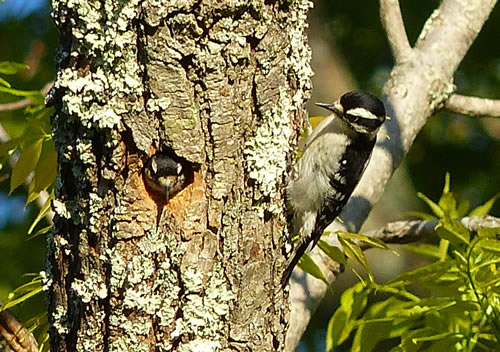
Observer: Paul Lauenstein
Observation Date: 5/5/18
Observation Time: 7:20 a.m.
Observation Location: Moose Hill Audubon Wildlife Sanctuary
Common Name: Downy Woodpecker
Scientific Name: Dendrocopos pubescens
Comments: Dendrocopos means “tree dagger” and “pubescens” refers to its downy hairs of puberty compared to those of the Hairy woodpecker, D. villosus.[The Dictionary of American Bird Names by Ernest A. Choate]
More Information: All About Birds
Observer: Ilan Fisher
Observation Date: 8/22/20
Observation Time: 2:00 p.m.
Observation Location: near intersection of Beach & Harding Streets
Common Name: Downy Woodpecker
Scientific Name: Dryobates pubescens
Comments: “Pubescens” refers to its downy hairs of puberty compared to those of the Hairy woodpecker, D. villosus. [The Dictionary of American Bird Names by Ernest A. Choate]
Downy woodpeckers look very much like hairy woopeckers, but downy woodpeckers are much smaller than hairy woodpeckers. To learn more about how to tell them apart, see: Project Feederwatch.
More Information: All About Birds
Observer: Ilan Fisher
Observation Date: 8/6/08
Observation Time: 2:00 p.m.
Observation Location: 66 N. Main Street
Common Name: Downy Woodpecker
Scientific Name: Picoides pubescens
Comments: Just visiting in a tree in front of the house.
More Information: All-Birds.com
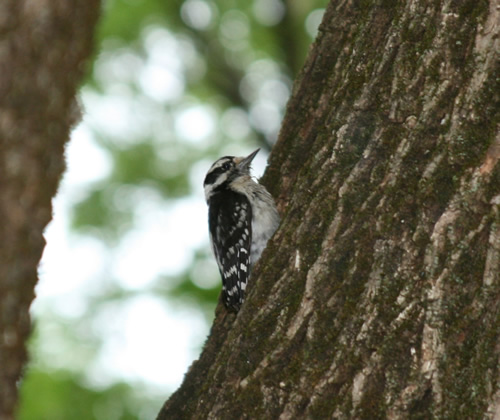
Observer: Faith Berkland
Observation Date: 10/8/17
Observation Time: 5:15 p.m.
Observation Location: Fence of horse corral, Willow St, Foxboro
Common Name: Eastern Bluebird
Scientific Name: Sialia sialis
Comments: 3 bluebirds were spotted here, 1 bright blue, one maybe an immature male because less bright, and one female.
More Information: All About Birds
Observer: Steven Woolner
Observation Date: 2/14/22
Observation Time: 2:00 p.m.
Observation Location: Osprey Road
Common Name: Eastern Bluebird
Scientific Name: Sialia sialis
Comments: Delighted to see Bluebirds at my feeder for the first time in 25+ years! I use Lyric Waste Free feed. They have also been visiting my birdbath 20 feet away, which luckily had water instead of ice, due to the recent warm spell.
On cold nights in winter, bluebirds huddle together to use their body heat to survive cold weather. See: https://www.pinterest.com/pin/319263061075187526/
More Information: All About Birds
Observer: Paul Lauenstein
Observation Date: 4/17/20
Observation Time: 2:00 p.m.
Observation Location: conservation land near Morse & Lakeview
Common Name: Eastern Bluebird
Scientific Name: Sialia sialis
Comments: The Sharon Friends of Conservation maintains six bluebird nesting boxes at this site. Most of them are occupied by tree swallows.
More Information: All About Birds
Observer: Paul Lauenstein
Observation Date: 4/23/24
Observation Time: 11:00 a.m.
Observation Location: Moose Hill Audubon Wildlife Sanctuary
Common Name: Eastern Bluebird
Scientific Name: Sialia sialis
Comments: In 1972, DDT was banned (note that bluebirds eat insects), and in 1973, Congress passed the Endangered Species Act. Bluebirds were listed as a Species of Special Concern in several states.
In 1973, the Camp Fire Girls began Project Save the Bluebirds. Projects like this instilled a greater love and respect for living things and an understanding of the serious problems faced by wildlife. Since then, various Boy Scout, Girl Scout, and 4-H Clubs have also organized bluebird projects.
For more on the history of bluebirds, see: https://www.sialis.org/history.htm
The Sharon Friends of Conservation maintains about 30 bluebird nesting boxes aound town. Volunteers monitor the nesting activity of the bluebirds, tree swallows, chickadees, and other birds that nest in them. Moose Hill Audubon Wildlife Sanctuary also maintains numerous bluebird nesting boxes. Thanks to efforts like these, bluebirds are once again easy to find in Sharon, if you know when and where to look.
More Information: All About Birds
Observer: Paul Lauenstein
Observation Date: 4/25/09
Observation Time: 11:05 a.m.
Observation Location: Moose Hill Audubon Wildlife Sanctuary
Common Name: Eastern Bluebird
Scientific Name: Sialia sialis
Comments: Female (above) and male (below)
More Information: Cornell Lab of Ornithology “All About Birds”
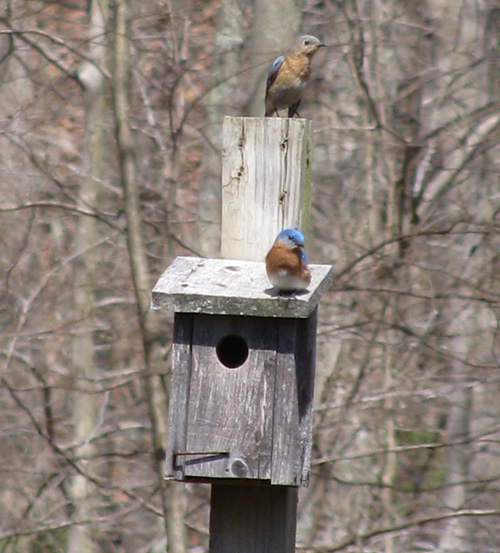
Observer: Paul Lauenstein
Observation Date: 4/25/20
Observation Time: 9:00 a.m.
Observation Location: Moose Hill Farm (TTOR)
Common Name: Eastern Bluebird
Scientific Name: Sialia sialis
Comments: The Sharon Friends of Conservation maintains some bluebird nesting boxes at this site. Volunteers monitor these nesting boxes and keep track of the bluebirds’ nesting activities.
More Information: All About Birds
Observer: Faith Berkland
Observation Date: 4/14/18
Observation Time: 3:30 p.m.
Observation Location: 302 Mansfield Street
Common Name: Eastern Bluebird
Scientific Name: Sialia sialis
More Information: All About Birds or Animalia
Observer: Paul Lauenstein
Contact Information: lauenstein@comcast.net (781) 784-2986
Observation Date: 5/1/18
Observation Time: 8:45 a.m.
Observation Location: Moose Hill Wildlife Sanctuary
Common Name: Eastern Bluebird
Scientific Name: Sialia sialis
Comments: This male bluebird caught a spider and brought it back to the nest to feed its young.
More Information: All About Birds
Observer: Paul Lauenstein
Observation Date: 5/11/20
Observation Time: 8:10 a.m.
Observation Location: field near Gavins Pond dam
Common Name: Eastern Bluebird
Scientific Name: Sialia sialis
Comments: The male bluebird caught an insect and gave it to its mate. The Sharon Friends of Conservation maintains six bluebird nesting boxes near Gavins Pond. Most of them are occupied by tree swallows.
More Information: All About Birds
Observer: Paul Lauenstein
Observation Date: 5/13/19
Observation Time: 11:00 a.m.
Observation Location: Moose Hill Audubon Wildlife Sanctuary
Common Name: Eastern Bluebird
Scientific Name: Sialia sialis
Comments: This male was guarding the territory near a nesting box where his mate had laid her blue eggs.
More Information: All About Birds
Observer: Paul Lauenstein
Observation Date: 5/14/14
Observation Time: 2:25 p.m.
Observation Location: Moose Hill Audubon Wildlife Sanctuary
Common Name: Eastern Bluebird
Scientific Name: Sialia sialis
Comments: Sharon Fiends of Conservation maintain about 30 bluebird houses in town. Volunteers check the bluebird houses weekly, and the data is used to help determine the optimum locations for bluebird houses.
More Information: All About Birds
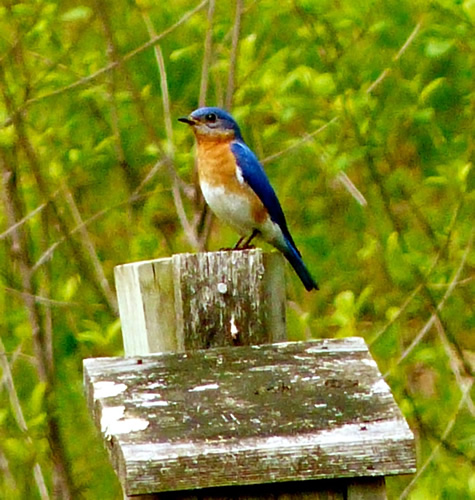
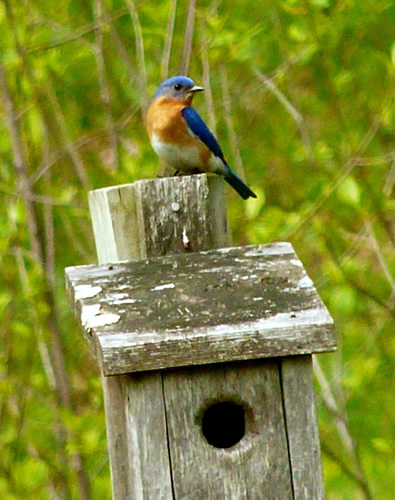
Observer: Paul Lauenstein
Observation Date: 5/18/23
Observation Time: 6:15 p.m.
Observation Location: Moose Hill Audubon Wildlife Sanctuary
Common Name: Eastern Bluebird
Scientific Name: Sialia sialis
Comments: In 1972, DDT was banned (note that bluebirds eat insects), and in 1973, Congress passed the Endangered Species Act. Bluebirds were listed as a Species of Special Concern in several states.
In 1973, the Camp Fire Girls began Project Save the Bluebirds. Projects like this instilled a greater love and respect for living things and an understanding of the serious problems faced by wildlife. Since then, various Boy Scout, Girl Scout, and 4-H Clubs have also organized bluebird projects.
For more on the history of bluebirds, see: https://www.sialis.org/history.htm
The Sharon Friends of Conservation maintains about 30 bluebird nesting boxes aound town. Volunteers monitor the nesting activity of the bluebirds, tree swallows, chickadees, and other birds that nest in them. Moose Hill Audubon Wildlife Sanctuary also maintains numerous bluebird nesting boxes. Thanks to efforts like these, bluebirds are once again easy to find in Sharon, if you know when and where to look.
More Information: All About Birds
Observer: Deb Radovsky
Observation Date: 5/2/18
Observation Time: 6:30 a.m.
Observation Location: Moose Hill Audubon Wildlife Sanctuary (Wood Thrush Trail)
Common Name: Eastern Bluebird
Scientific Name: Sialia sialis
Comments: You can find Eastern Bluebirds in open country with patchy vegetation and large trees or nest boxes. Meadows, old fields, and golf courses are good places. Bluebirds typically sit in the open on power lines or along fences, with an alert, vertical posture. When they drop to the ground after an insect, they make a show of it, with fluttering wings and a fairly slow approach, followed by a quick return to the perch.
More Information: All About Birds
Observer: Paul Lauenstein
Observation Date: 5/3/15
Observation Time: 1:55 p.m.
Observation Location: field near Gavins Pond
Common Name: Eastern Bluebird
Scientific Name: Sialia sialis
Comments: I found a couple of sky-blue eggs in one of the nesting boxes near Gavins Pond. Then I saw the parents. As I was snapping photos of the male bluebird, it suddenly stretched out its wing. A moment later it was gone.
More Information: National Audubon Society
Observer: Paul Lauenstein
Observation Date: 5/8/19
Observation Time: 9:40 a.m.
Observation Location: Moose Hill Audubon Wildlife Sanctuary
Common Name: Eastern Bluebird
Scientific Name: Sialia sialis
Comments: This male was guarding the territory surrounding a nesting box where his mate had laid her blue eggs.
More Information: All About Birds
Observer: Rita Corey
Observation Date: 6/23/19
Observation Time: 3:30 p.m.
Observation Location: 282 Mountain Street (back yard)
Common Name: Eastern Bluebird
Scientific Name: Sialia sialis
Comments: This bluebird was checking out the bluebird house. Note that the entrance hole has been gnawed by a squirrel. The extra piece of wood that’s attached around the hole makes it harder for squirrels to enlarge the hole enough to get inside.
More Information: All About Birds
Observer: Paul Lauenstein
Observation Date: 9/30/10
Observation Time: 9:25 a.m.
Observation Location: Gavins Pond Road near soccer fields
Common Name: Eastern Bluebird
Scientific Name: Sialia sialis
Comments: Bluebirds are becoming an increasingly common sight in the open fields bordered by woods in the vicinity of the soccer fields on Gavins Pond Road, thanks to the nesting boxes provided by SFOC.
More Information: Cornell Lab of Ornithology “All About Birds”
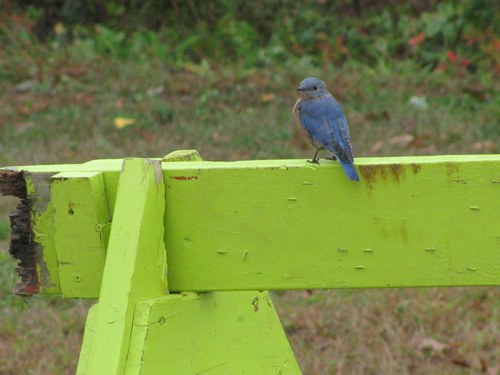
Observer: Paul Lauenstein
Observation Date: 6/27/11
Observation Time: 6:10 p.m.
Observation Location: near Gavins Pond
Common Name: Bluebird (Immature)
Scientific Name: Sialia sialis
Comments: SFOC has installed 38 bluebird nesting boxes around Sharon. This young bluebird is among the first this year to roll off SFOC’s “bluebird factory” assembly line. The speckles on its breast and noticeable white eye-ring indicate that it is a juvenile. Other broods have not yet fledged.
More Information: Cornell Lab of Ornithology “All About Birds”
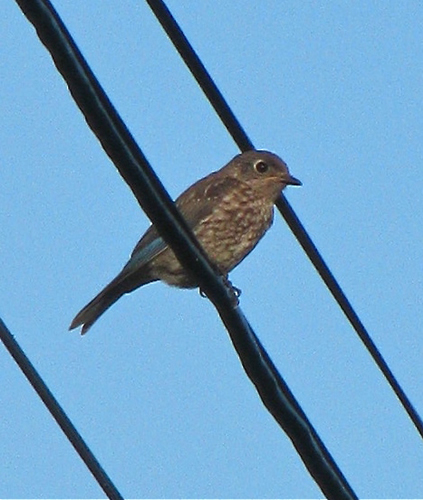
Observer: Paul Lauenstein
Observation Date: 7/15/10
Observation Time: 10:50 a.m.
Observation Location: Gavins Pond Road soccer field parking lot
Common Name: Bluebird (juvenile)
Scientific Name: Sialia sialis
Comments: Young bluebirds that recently left the nest have distinctive white spots on their wings. The presence of this juvenile at the Gavins Pond Road soccer field parking lot indicates the success of SFOC efforts to provide nesting boxes in the vicinity.
More Information: Cornell Lab of Ornithology “All About Birds”
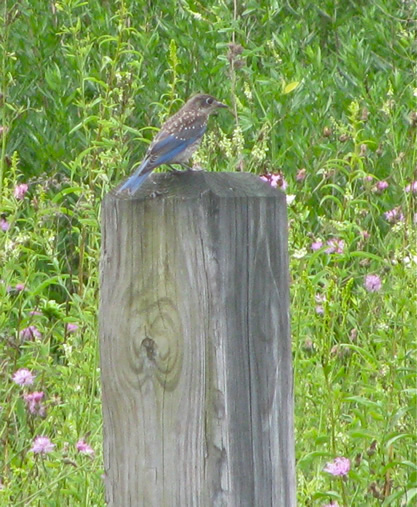
Observer: Paul Lauenstein
Observation Date: 10/9/14
Observation Time: 4:00 p.m.
Observation Location: Gavins Pond soccer field
Common Name: Eastern Bluebird
Scientific Name: Sialia Sialis
Comments: This bluebird was still hanging around Sharon in October. Bluebirds actually overwinter in Sharon, feeding on seeds. On cold nights they huddle in groups inside nesting boxes to keep warm.
More Information: All About Birds
Observer: Paul Lauenstein
Observation Date: 4/25/13
Observation Time: 2:30 p.m.
Observation Location: near Gavins Pond Dam
Common Name: Eastern Bluebird (male)
Scientific Name: Sialia sialis
Comments: This male bluebird was guarding a nest with five sky-blue eggs in a nesting box provided by Kurt Buermann, President of the Sharon Friends of Conservation. The blue color is more or less vivid depending on the brightness and angle of the ambient light.
More Information: All About Birds
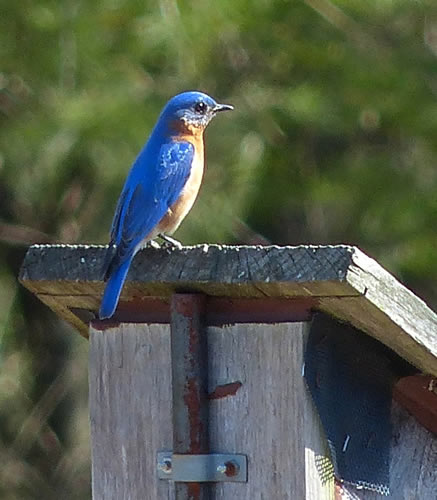
Observer: Paul Lauenstein
Observation Date: 5/19/20
Observation Time: 9:50 a.m.
Observation Location: field near Gavins Pond dam
Common Name: Eastern kingbird
Scientific Name: Tyrannus tyrannus
Comments: Kingbirds are members of the flycatcher family. The tip of the tail looks like it was dipped in white paint. Their call has been likened to the sound of arcing electricity.
In summer kingbirds eat mostly flying insects. Pairs maintain a breeding territory and defend it vigorously against all other kingbirds. In winter along the Amazon, however, they have a very different lifestyle: they travel in flocks and eat fruit.
More Information: All About Birds
Observer: Paul Lauenstein
Observation Date: 6/14/20
Observation Time: 4:40 p.m.
Observation Location: Moose Hill Farm (TTOR)
Common Name: Eastern Kingbird
Scientific Name: Tyrannus tyrannus
Comments: Kingbirds are members of the flycatcher family. The tip of the tail looks like it was dipped in white paint. Their call has been likened to the sound of arcing electricity.
In summer kingbirds eat mostly flying insects. Pairs maintain a breeding territory and defend it vigorously against all other kingbirds. In winter along the Amazon, however, they have a very different lifestyle: they travel in flocks and eat fruit.
More Information: All About Birds
Observer: Paul Lauenstein
Observation Date: 4/21/24
Observation Time: 7:30 a.m.
Observation Location: Moose Hill Audubon Wildlife Sanctuary
Common Name: Eastern Towhee (male)
Scientific Name: Pipilo erythrophthalmus
Comments: Towhees are common birds in Sharon, especially along edges between woods and open fields, but they are heard more than seen. The male’s song sounds like he’s singing, “Drink your tea.” They are sometimes seen scratching among dead leaves on the ground, presumably looking for insects to eat.
More Information: All About Birds
Observer: Deb Radovsky
Observation Date: 4/23/18
Observation Time: 6:00 p.m.
Observation Location: Moose Hill Audubon Wildlife Sanctuary, Billings Loop
Common Name: Eastern Towhee
Scientific Name: Pipilo erythrophthalmus
Comments: The Towhee’s song sounds like, “Drink your tea,” making it easy to remember when you’re in the woods. It’s call sounds like its name, “Toe-wee.”
Eastern Towhees are often victims of the parasitic Brown-headed Cowbird. Female cowbirds lay eggs in towhee nests, then leave the towhees to raise their cowbird young. In some areas cowbirds lay eggs in more than half of all towhee nests. Towhees, unlike some other birds, show no ability to recognize or remove the imposter’s eggs. Female cowbirds typically take out a towhee egg when laying their own, making the swap harder to notice.
More Information: All About Birds
Observer: Paul Lauenstein
Observation Date: 4/21/24
Observation Time: 7:30 a.m.
Observation Location: Moose Hill Audubon Wildlife Sanctuary
Common Name: Eastern Towhee (male)
Scientific Name: Pipilo erythrophthalmus
Comments: Towhees are common birds in Sharon, especially along edges between woods and open fields, but they are heard more than seen. The male’s song sounds like he’s singing, “Drink your tea.” They are sometimes seen scratching among dead leaves on the ground, presumably looking for insects to eat.
More Information: All About Birds
Observer: Paul Lauenstein
Observation Date: 5/11/19
Observation Time: 7:30 a.m.
Observation Location: Moose Hill Audubon Wildlife Sanctuary
Common Name: Eastern Towhee (male)
Scientific Name: Pipilo erythrophthalmus
Comments: Towhees are common birds in Sharon, especially along edges between woods and open fields, but they are heard more than seen. The male’s song sounds like he’s singing, “Drink your tea.” They are sometimes seen scratching among dead leaves on the ground, presumably looking for insects to eat.
Note its deep red eye.
More Information: All About Birds
Observer: Paul Lauenstein
Observation Date: 5/15/14
Observation Time: 3:40 p.m.
Observation Location: field near Gavins Pond dam
Common Name: Eastern Towhee
Scientific Name: Pipilo erythrophthalmus
Comments: The Eastern towhees is the largest member of the sparrow family. Its call, “Drink your tea.” can be heard much more often than it is seen, but once you become aware of them, you will realize that they are very common in Sharon.
More Information: All About Birds
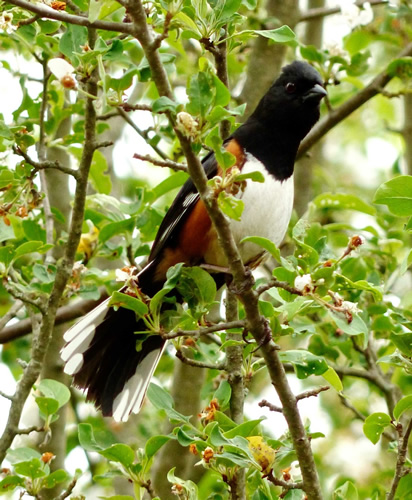
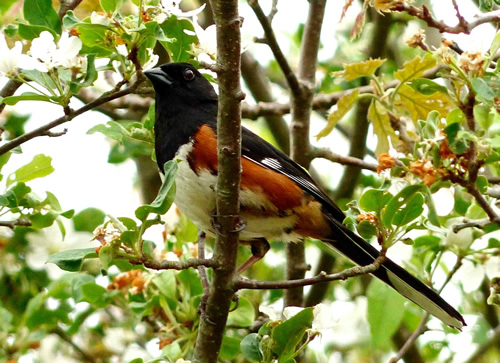
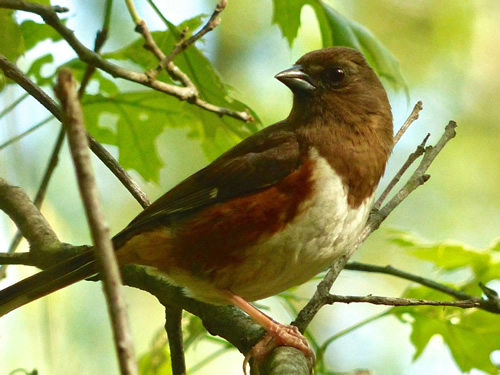
Observer: Paul Lauenstein
Observation Date: 5/19/19
Observation Time: 7:45 a.m.
Observation Location: Moose Hill Audubon Wildlife Sanctuary
Common Name: Eastern Towhee (male)
Scientific Name: Pipilo erythrophthalmus
Comments: Towhees are common birds in Sharon, especially along edges between woods and open fields, but they are heard more than seen. The male’s song sounds like he’s singing, “Drink your tea.” They are sometimes seen scratching among dead leaves on the ground, presumably looking for insects to eat.
Note its deep red eye.
More Information: All About Birds
Observer: Paul Lauenstein
Observation Date: 5/27/19
Observation Time: 5:30 p.m.
Observation Location: Under high tension wires across the street from Ward’s Berry Farm
Common Name: Eastern Towhee (male)
Scientific Name: Pipilo erythrophthalmus
Comments: This male towhee tried to scare me away by repeatedly raising one wing or the other to make itself look more intimidating. Note its deep red eye.
More Information: All About Birds
Observer: Paul Lauenstein
Observation Date: 5/4/11
Observation Time: 1:50 p.m.
Observation Location: Gavins Pond
Common Name: Eastern towhee
Scientific Name: Pipilo erythrophthalmus
Comments: Towhees are the largest of the sparrows. They are quite common in Sharon. They have a distinctive call that sounds like “Drink your tea.”
More Information: All About Birds.org
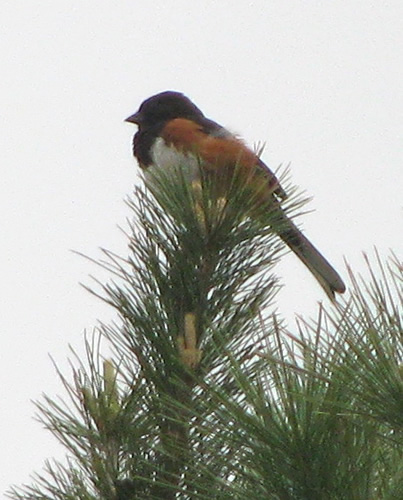
Observer: Paul Lauenstein
Observation Date: 5/4/13
Observation Time: 5:55 p.m.
Observation Location: Soccer parking area on Gavins Pond Road
Common Name: Eastern Towhee
Scientific Name: Pipilo erythrophthalmus
Comments: The Eastern Towhee is our largest sparrow. This male was scuffing for food in the dry leaves on the ground in a grove of trees beside the soccer parking lot. The racket he was making attracted my attention.
The call of the Towhee, which sounds like “Toe-wee,” accounts for its name. It has another call that is said to sound like “Drink Your Tea.” Once you learn to recognize the Towhee’s call, you will begin to realize that these shy birds are quite common around here, even though you may not see them in the foliage.
More Information: All About Birds
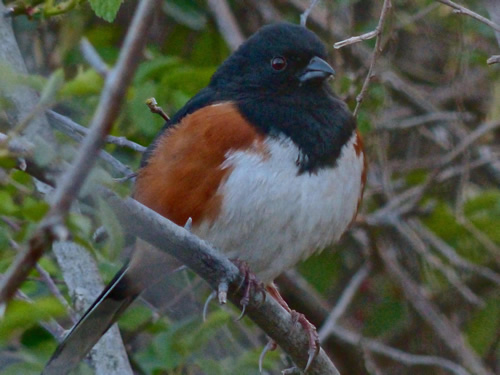
Observer: Paul Lauenstein
Observation Date: 5/6/15
Observation Time: 3:30 p.m.
Observation Location: field near Gavins Pond
Common Name: Eastern Towhee
Scientific Name: Pipilo erythrophthalmus
Comments: The Eastern Towhee is our largest sparrow. Its song can be remembered easily because it sounds like it is singing, “Drink your tea.”
More Information: All About Birds
Observer: Josh Simons
Observation Date: 5/16/20
Observation Time: 7:00 p.m.
Observation Location: Moose Hill area
Common Name: Eastern Towhee (female)
Scientific Name: Pipilo erythrophthalmus
Comments: Towhees are common birds in Sharon, especially along edges between woods and open fields, but they are heard more than seen. The male’s song sounds like he’s singing, “Drink your tea.” They are often seen scratching among dead leaves on the ground, looking for insects to eat.
Towhees are large members of the sparrow family.
More Information: All About Birds
Observer: Deborah Radovsky
Observation Date: 5/6/22
Observation Time: early morning
Observation Location: Moose Hill Audubon Wildlife Sanctuary
Common Name: Eastern Towhee (female)
Scientific Name: Pipilo erythrophthalmus
Comments: A strikingly marked, oversized sparrow of the East
More Information: All About Birds
Observer: Jason Platt
Observation Date: 5/8/18
Observation Time: 10:00 a.m.
Observation Location: Moose Hill Audubon Wildlife Sanctuary
Common Name: Eastern Towhee (female)
Scientific Name: Pipilo erythrophthalmus
Comments: Towhees are common birds in Sharon, especially along edges between woods and open fields, but they are heard more than seen. The male’s song sounds like he’s singing, “Drink your tea.”
More Information: All About Birds
Observer: Paul Lauenstein
Observation Date: 6/29/11
Observation Time: 11:40 a.m.
Observation Location: Gavins Pond
Common Name: Eastern Towhee (female)
Scientific Name: Pipilo erythrophthalmus
Comments: This female Rufous-sided Towhee chirped “towee” repeatedly as it hopped around in a shrub. It’s a common bird that is heard more than seen. The male’s song sounds like he’s singing, “Drink your tea.”
More Information: All About Birds
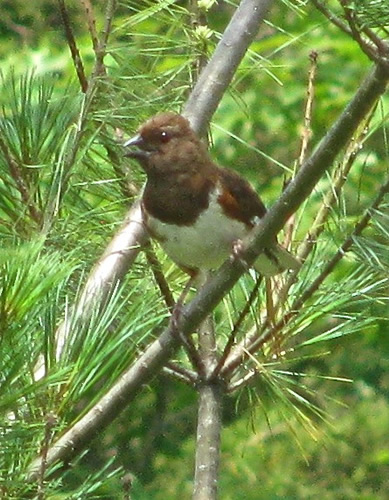
Observer: Deborah Radovsky
Observation Date: 5/5/22
Observation Time: early morning
Observation Location: Moose Hill Audubon Wildlife Sanctuary
Common Name: Eastern Towhee (male)
Scientific Name: Pipilo erythrophthalmus
Comments: A strikingly marked, oversized sparrow of the East
More Information: All About Birds
Observer: Paul Lauenstein
Observation Date: 5/16/23
Observation Time: 9:45 a.m.
Observation Location: Moose Hill Audubon Wildlife Sanctuary
Common Name: Eastern Wood-Pewee
Scientific Name: Contopus virens
Comments: The unmistakable song of the wood-pewee (“pee-a-wee”) sounds like its name. It’s a member of the flycatcher family that is typically found in or near forested areas.
You can find and play bird songs online. The more bird calls you memorize, the more bird species you will be able to identify in the field, where the birds themselves are often concealed by foliage.
More Information: All About Birds
Observer: Paul Lauenstein
Observation Date: 5/23/16
Observation Time: 7:00 a.m.
Observation Location: Moose Hill Audubon Wildlife Sanctuary
Common Name: Eastern Wood-Pewee
Scientific Name: Contopus virens
Comments: The unmistakable song of the wood-pewee (“pee-a-wee”) sounds like its name. It’s a member of the flycatcher family that is typically found in or near forested areas.
You can find and play bird songs online. The more bird calls you memorize, the more bird species you will be able to identify in the field, where the birds themselves are often concealed by foliage.
More Information: All About Birds
Observer: Paul Lauenstein
Observation Date: 5/24/18
Observation Time: 6:55 a.m.
Observation Location: Moose Hill Audubon Wildlife Sanctuary
Common Name: Eastern Wood-Pewee
Scientific Name: Contopus virens
Comments: The unmistakable song of the wood-pewee (“pee-a-wee”) sounds like its name. It’s a member of the flycatcher family that is typically found in or near forested areas.
You can find and play bird songs online. The more bird calls you memorize, the more bird species you will be able to identify in the field, where the birds themselves are often concealed by foliage.
More Information: All About Birds
Observer: Deb Radovsky
Observation Date: 5/29/22
Observation Time: early morning
Observation Location: Moose Hill Audubon Wildlife Sanctuary near Billings barn
Common Name: Eastern Wood-Pewee
Scientific Name: Contopus virens
Comments: The unmistakable song of the wood-pewee (“pee-a-wee”) sounds like its name. It’s a member of the flycatcher family that is typically found in or near forested areas.
You can find and play bird songs online. The more bird calls you memorize, the more bird species you will be able to identify in the field, where the birds themselves are often concealed by foliage.
More Information: All About Birds
Observer: Paul Lauenstein
Observation Date: 4/19/15
Observation Time: 4:50 p.m.
Observation Location: field near Gavins Pond
Common Name: Field Sparrow
Scientific Name: Spizella pusilla
Comments: The song of the field sparrow is a series of chirps that gets progressively more rapid like a bouncing ping-pong ball. Check it out at: http://www.allaboutbirds.org/guide/Field_Sparrow/sounds
Observer: Deb Radovsky
Observation Date: 5/12/18
Observation Time: 9:10 a.m.
Observation Location: Moose Hill Farm (TTOR), Powerline Trail
Common Name: Field Sparrow
Scientific Name: Spizella pusilla
Comments: The clear trill of the Field Sparrow is a familiar summer sound in brushy fields and roadsides of the East and Midwest. The tempo of its song accelerates like a bouncing ping-pong ball.
More Information: All About Birds
Observer: Paul Lauenstein
Observation Date: 5/26/14
Observation Time: 5:55 p.m.
Observation Location: field near Gavins Pond dam
Common Name: Field sparrow
Scientific Name: Spizella pusilla
Comments: The song of a field sparrow starts out slowly and then gets faster, like a bouncing ping-pong ball. There are at least 18 species of sparrows in Massachusetts. Learning their respective calls is a good way to find and identify them.
More Information: All About Birds
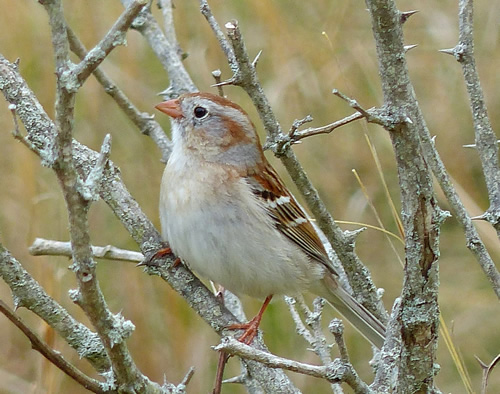
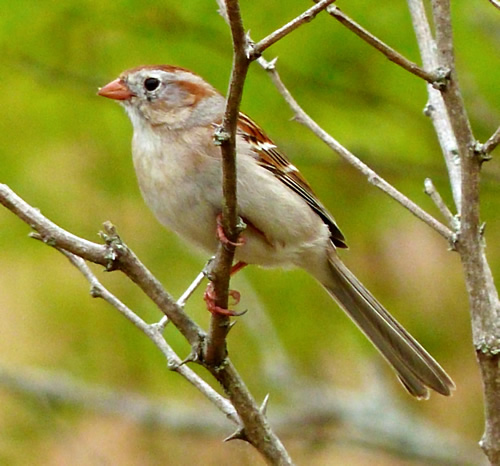
Observer: Paul Lauenstein
Observation Date: 5/27/19
Observation Time: 5:05 p.m.
Observation Location: Rocky bluff under power lines near So. Walpole Street
Common Name: Field Sparrow
Scientific Name: Spizella pusilla
Comments: Field sparrows have a relatively long tail, a thin white eye ring, and a pinkish conical bill. They have a gray face and a rust-colored cap. However, the best way to tell them apart from other sparrows is their song, an accelerating trill reminiscent of a bouncing ping-pong ball.
More Information: All About Birds
Observer: Paul Lauenstein
Observation Date: 6/2/19
Observation Time: 2:40 p.m.
Observation Location: Rocky bluff under power lines near So. Walpole Street
Common Name: Field Sparrow
Scientific Name: Spizella pusilla
Comments: Field sparrows have a relatively long tail, a thin white eye ring, and a pinkish conical bill. They have a gray face and a rust-colored cap. However, the best way to tell them apart from other sparrows is their song, an accelerating trill reminiscent of a bouncing ping-pong ball.
More Information: All About Birds
Observer: Faith Berkland
Observation Date: 11/25/23
Observation Time: 3:10 pm
Observation Location: 302 Mansfield Street Sharon, MA
Common Name: Golden-crowned Kinglet
Scientific Name: Regulus satrapa
Comments: Had camera but wasn’t close enough to get a good shot.
Golden-crowned Kinglets are boldly marked with a black eyebrow stripe and flashy lemon-yellow crest. A good look can require some patience, as they spend much of their time high up in dense spruce or fir foliage. To find them, listen for their high, thin call notes and song. Though barely larger than a hummingbird, this frenetically active bird can survive –40 degree nights, sometimes huddling together for warmth. They breed in the far north and montane west and visit most of North America during winter.
More Information: All About Birds
Observer: Josh Simons
Observation Date: 5/12/20
Observation Time: 6:00 p.m.
Observation Location: Moose Hill area
Common Name: Gray Catbird
Scientific Name: Dumetella carolinensis
Comments: Catbirds are one of three mimics in our area. Mockingbirds and Brown Thrashers are the other two. Catbirds repeat sounds just once, whereas Brown Thrashers repeat sounds twice, and Mockingbirds repeat them three or four times before moving on to the next sound. Sometimes you can hear the calls of other common birds echoed in the calls of these mimics.
Catbirds also make a “mewing” sound, hence their name.
More Information: All About Birds
Observer: Paul Lauenstein
Observation Date: 5/23/23
Observation Time: 8:45 p.m.
Observation Location: Moose Hill Audubon WIldlife Sanctuary
Common Name: Gray Catbird
Scientific Name: Dumetella carolinensis
Comments: Catbirds are one of three mimics in our area. Mockingbirds and Brown Thrashers are the other two. Catbirds repeat sounds just once, whereas Brown Thrashers repeat sounds twice, and Mockingbirds repeat them three or four times before moving on to the next sound. Sometimes you can hear the calls of other common birds echoed in the calls of these mimics.
Catbirds also make a “mewing” sound, hence their name.
More Information: All About Birds
Observer: Paul Lauenstein
Observation Date: 6/9/13
Observation Time: 1:55 p.m.
Observation Location: 4 Gavins Pond Road (back yard)
Common Name: Gray Catbird
Scientific Name: Dumetella carolinensis
Comments: Catbirds are one of three mimics in our area. Mockingbirds and Brown Thrashers are the other two. Catbirds repeat sounds just once, whereas Brown Thrashers repeat sounds twice, and Mockingbirds repeat them three or four times before moving on to the next sound. Sometimes you can hear the calls of other common birds echoed in the calls of these mimics.
Catbirds also make a “mewing” sound, hence their name.
More Information: All About Birds
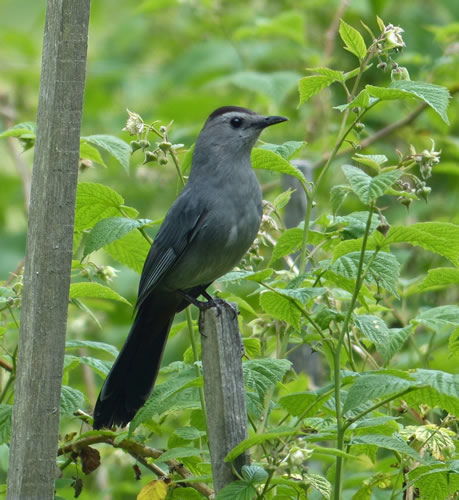
Observer: Ilan Fisher
Observation Date: 8/28/20
Observation Time: 2:00 p.m.
Observation Location: near intersection of Beach & Harding Streets
Common Name: Gray Catbird
Scientific Name: Dumetella carolinensis
Comments: Catbirds are one of three mimics in our area. Mockingbirds and Brown Thrashers are the other two. Catbirds repeat sounds just once, whereas Brown Thrashers repeat sounds twice, and Mockingbirds repeat them three or four times before moving on to the next sound. Sometimes you can hear the calls of other common birds echoed in the calls of these mimics.
Catbirds also make a “mewing” sound, hence their name.
Catbirds are mostly gray with a dark cap, but they also have a striking rusty-red patch on the underside of the base of the tail.
More Information: All About Birds
Observer: Paul Lauenstein
Observation Date: 11/11/12
Observation Time: 4:25 p.m.
Observation Location: Gavins Pond Dam
Common Name: Great Blue Heron
Scientific Name: Ardea herodias
Comments: These magnificent birds are often seen wading in shallow ponds looking for a meal of fish, frogs, snakes, and even small mammals.
More Information: All About Birds
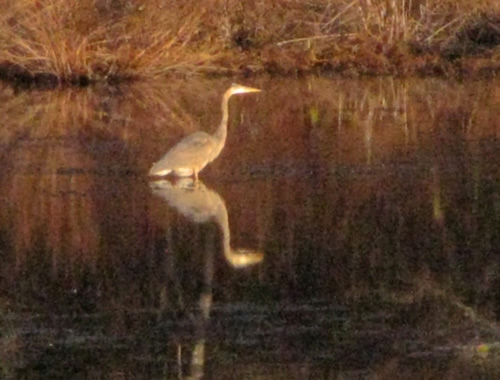
Observer: Alison Siegel
Observation Date: 4/16/10
Observation Time: 6:00 a.m.
Observation Location:
Common Name: Great Blue Heron
Scientific Name: Ardea herodias
Comments: Great Blue Heron was walking across beach off of Lakeview Street in shallow water.
More Information: All About Birds
Observer: Tamara Fisher
Observation Date: 5/13/22
Observation Time: 8:30 a.m.
Observation Location: Mann’s Pond
Common Name: Great Blue Heron
Scientific Name: Ardea herodias
Comments: Adult great blue herons weigh about 5 lbs. They weigh more than great horned owls, which weigh about 3 lbs., but they are not the largest bird found in Sharon. Bald eagles can reach 14 lbs.
Great blue herons make large nests in tall trees. They establish rookeries consisting of multiple nests.
More Information: All About Birds
Observer: Paul Lauenstein
Observation Date: 5/26/10
Observation Time: 5:15 p.m.
Observation Location: Gavins Pond
Common Name: Great Blue Heron
Scientific Name: Ardea herodias
Comments: Great blue herons primarily feed on small fish, but they are opportunistic feeders and will eat whatever comes within striking distance. They occasionally snack on shrimp, crabs, small mammals, amphibians, small birds, rodents, and insects.
More Information: All About Birds
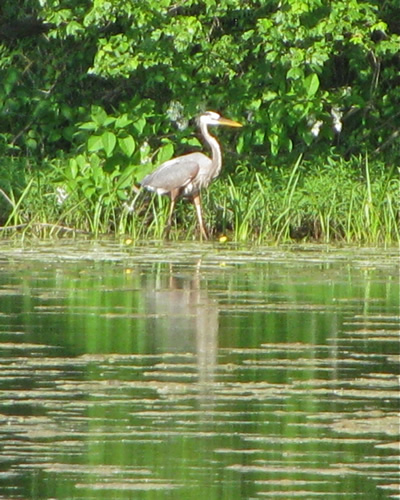
Observer: Ilan Fisher
Observation Date: 7/20/14
Observation Time: 12:00 p.m.
Observation Location: Massapoag Ave/Community center
Common Name: Great Blue Heron
Scientific Name: Ardea herodias
Comments: Probably checking out Sucker Brook, which flows into Lake Massapoag nearby, for a snack.
More Information: All About Birds

Observer: Ilan Fisher
Observation Date: 8/20/20
Observation Time: 10:00 a.m.
Observation Location: Lake Massapoag
Common Name: Great Blue Heron
Scientific Name: Ardea herodias
Comments: Adult great blue herons weigh about 5 lbs. They weigh more than great horned owls, which weigh about 3 lbs., but they are not the largest bird found in Sharon. Bald eagles can reach 14 lbs.
More Information: All About Birds
Observer: Paul Lauenstein
Observation Date: 6/15/13
Observation Time: 1:40 p.m.
Observation Location: Moose Hill Audubon Wildlife Sanctuary
Common Name: Great Blue Heron Rookery
Scientific Name: Ardea herodias
Comments: These three juvenile herons were occupying a huge nest in a big tree, waiting for their parents to bring food. They will fly away soon to fend for themselves.
Note the eyes of the right-most bird in the photo. Being able to look down has obvious utility for a wading hunter. Although Great Blue Herons have a wingspan of around six feet, they only weigh about five pounds because they have hollow bones. This helps them fly. They can live up to 24 years, according to banding records.
Great Blue Herons prey on fish, amphibians, reptiles, insects, rodents, and even birds.
More Information: All About Birds
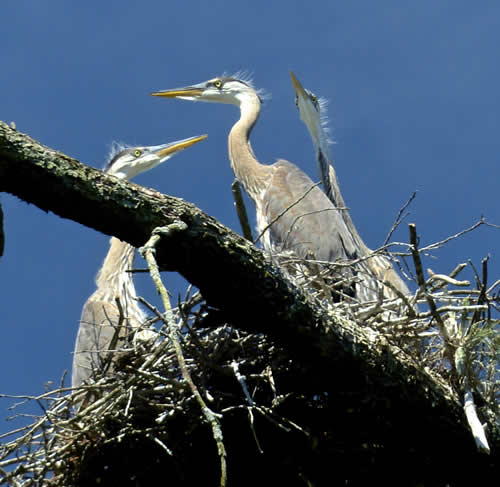
Observer: Paul Lauenstein
Observation Date: 6/26/10
Observation Time: 3:10 p.m.
Observation Location: Moose Hill Audubon Wildlife Sanctuary
Common Name: Great Blue Heron Rookery
Scientific Name: Ardea herodias
Comments: Comments: The great blue heron nest shown in the photos below was part of a rookery consisting of many heron nests clustered in a pine grove.
While walking in the woods on a summer afternoon, we heard a clattering cacaphony, and followed out ears to find out what was making the racket. We came to a place where the forest floor was splotched in white guano. We looked up and saw many huge nests scattered among the tall pine trees.
It appears from the photo that the juvenile herons were as interested in us as we were in them. Note how their eyes stick out a little and are able to swivel so they can peer downwards. I imagine this trait is useful when the herons are wading around the edge of a pond looking for fish.
This observation occurred late in the nesting season when the young herons were almost ready to fly away.
More Information: All About Birds
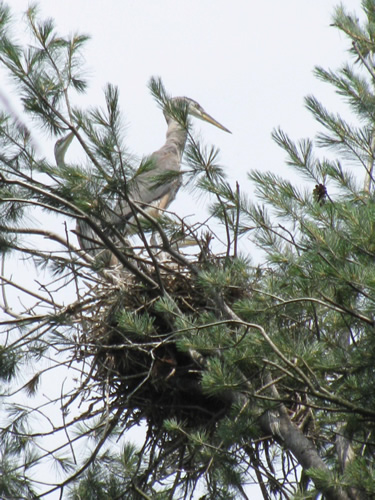
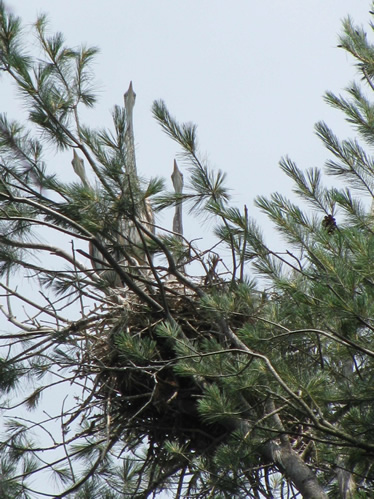
Observer: Paul Lauenstein
Observation Date: 5/11/18
Observation Time: 2:30 p.m.
Observation Location: meadow at Lakeview & Morse (see photo below)
Common Name: Great crested flycatcher
Scientific Name: Myiarchus crinitus
Comments: The great-crested flycatcher has a pale yellow breast. The memory hook I use to remember its call is “weep, weep, weep.”
More Information: All About Birds
Observer: Paul Lauenstein
Observation Date: 5/11/23
Observation Time: 7:00 a.m.
Observation Location: Moose Hill Audubon Wildlife Sanctuary
Common Name: Great Crested flycatcher
Scientific Name: Myiarchus crinitus
Comments: The great-crested flycatcher has a pale yellow breast. The underside of its tail is reddish brown.
The memory hook I use to remember its call is “weep, weep, weep.”
More Information: All About Birds

